Challenger 2, aka the FV4034, is the UKs Main Battle Tank (MBT). Other world powers across the globe also use MBTs in their armies. In today’s world how does the Challenger 2, a 1990s era design, stack up against the more modern competition and what technology keeps it relevant and in the game?
The FV4034 Challenger 2, is the UKs Main Battle Tank and operates across the globe from exercises with allied countries to theatres of war like Iraq. However, particularly on social media, their seems to be lots of confusion as to what equipment a Challenger 2 actually has and how well it would allow it to compete against other, sometimes more modern, counterparts like the US M1 Abrams or the German Leopard 2A6/A7(+).
Before we look at it’s performance stats, what really is a Challenger 2 and why does it exist?
Challenger 2 is a third generation MBT, the same generation as the Russian T-80 & T-90, German Leopard 2 and US M1 Abrams. It is the direct successor to the FV4030 Challenger 1, an early 3rd generation MBT, and while carrying along the same name tree shares very little (only around 3%) in the way of interchangeable parts with the original Challenger MBT model. Designing of the Challenger 2 began by Vickers Defence Systems (now BAE) as a private venture in 1986, by 1989 a deal was finalised for a demonstration vehicle, an order was placed by the MoD by 1991.
Comparison
For this comparison we will mainly focus on what the Challenger 2 is equipped with and will compare the equipment to the US M1A2 Abrams, the German Leopard 2A6 and the Russian T-90.
The two main parts of a MBT are the Gun and the Armour. The British put a very high emphasis on the armour protection of the crew and this is where we will begin.
Armour
The armour of the Challenger 2 is among the best in the world. It is equipped with second generation Chobham armour (this generation known as Dorchester) which is said to be around two times stronger than steel. During conflict it can also have even more armour added with Explosive Reactive armour kits and additional bar armour can also be fitted.
Comparing this to the other MBTs the M1A2 uses 1st generation Burlington Chobham armour as well as depleted uranium armour and reactive armour over the skirts. In comparison the T-90 has a two tier armour protection consisting of composite armour and explosive reactive armour. Differing again is the Leopard 2A6 which has core spaced armour and composite armour rumoured to be based off Chobham armour. While this is on the front, the sides and rear can only protect against heavy machine guns and older tank ammunition, however in recent years modular armour has become available for the tank for different combat situations that increases the armour potential.
Armament
The Challenger 2 is fitted with the royal ordnance L30A1 tank gun; the L30A1 is of the same family as the world record holding L11A5 gun which was equipped to Challenger 1, to which a similar record is held by Challenger 2. The L30 is 120mm in diameter and 55-calibers long, made from high tech steel with a chromium alloy lining. This is the only gun fitted to a NATO tank that is rifled. Other features include a thermal sleeve, fume extraction and and an all electric stabilisation.

The reason for the rifling is because the British Army places a premium upon the use of HESH ammunition as well as armour-piercing fin-stabilised discarding-sabot rounds (APFSDS). The hesh rounds have a much longer range (up to 5 miles further) than APFSDS and are much more effective against buildings as well as thinner skinned vehicles. Challenger 2 can carry 49 main armament rounds, a mixture of the aforementioned HESH and APFSDS as well as white phosphorus smoke rounds.
In comparison the M1A2 Abrams is equipped with a 120mm L/44 M256A1 smoothbore gun of which 42 rounds can be carried. Like Challeger 2 APFSDS rounds are used. Unlike Challenger 2 it can also be used with anti-personnel canisters and HEAT rounds.
The Leopard 2A6 uses a very similar gun to the Abrams, the L55 which is slightly longer. It also incorporates a newer APFSDS round and a Mulitpurpose anti-tank projectile (MPAT). Rheinmatall the manufacturer have also developed an upgrade that allows the gun to fire anti-tank guided missiles. Like the Challenger 2 it also has a chromium lined barrel.
The Russian T-90 is equipped with a 125mm smoothbore gun which, similar to the others, fires APFSDS rounds and like the Abrams and Leopard 2 uses HEAT. The T-90 can also use high explosive fragmentation ammunition and anti-tank guided missiles.
Fire Control
The fire control on the Challenger 2, although not revolutionary now is still competitive, using a digital fire control computer to control all of the sighting instruments. The commander has a panoramic gyrostabilised sight with laser rangefinder as well as eight periscopes giving 360 degree vision. Challenger 2 is also fitted with Thermal observation and Gunnery Sight (TOGS II) which provides nightvision and thermal imaging which is displayed on the commanders and gunners monitors, combined all this is called hunter killer optics. While the gunner is engaging the target the commander designates another, when the original target is destroyed the turret turns automatically and the process begins again.
Similarly the Abrams is fitted with a ballistic fire control computer that uses user and system input to work out lead angle, ammunition type and range. Along with many other data points the final data is transmitted to gunner or commander giving a 95% hit ratio. Furthermore Abrams is also fitted with hunter killer optics. In this year (2017) the Abrams sights are receiving an upgrade.
The fire control systems in the T-90 and Leopard 26 are very similar to that of both Challenger 2 and the M1A2.
Mobility
The Challenger 2 is fitted with a Perkins 26.6 litre Diesel engine which has 1200bhp.

This goes through an 8 speed gear box (6 fwd, 2rev.). It travels on second generation hydrogas suspension with a hydraulically adjustable double-pin track. All this gives it a maximum speed on road of 36mph and 25mph off road. The range of Challenger 2 has recently been stated as 550km by the British Army, this is however only on road.
The T-90s prime mover is the B-92C Diesel engine which produces 1000 hp. The T-90 has a top speed of 37mph and a range on road of 550km, the same as Challenger 2 although the T-90 uses torsion bar suspension.
The Leopard 2A6 also uses torsion bar suspension but has a much more powerful engine at just over 1450 hp. This engine is also diesel powered but has multifuel capability. Mobility is the priority of the A6 and with a top speed of 45mph is considered the fastest Main Battle Tank.
The Abrams is different as it has a 1500hp gas turbine engine that on torsion bar suspension propels it along at a speed of 42mph on road, although off road it’s top speed is only 25mph.


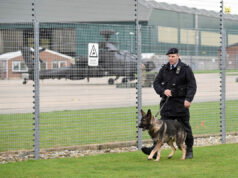

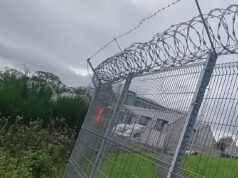
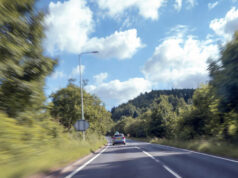
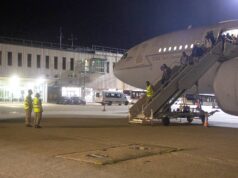

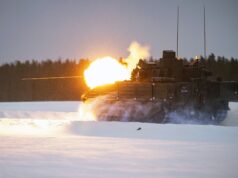
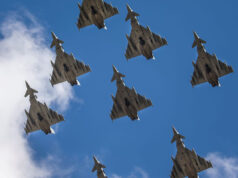
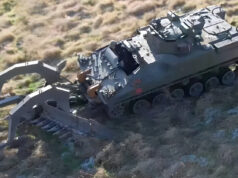


Thank you for facts. Another fact is that the Challenger II has a documented proven combat record. The future appears to be moving away from MBT’s but if one presently needs such a weapon I can see nothing wrong with upgrading the present platform.
As with defence trends, the main battle tank is once again back in focus. In truth, it never went away and remained as the elephant in the room. There was little need for them during the war in Afghanistan, so were relegated in preference for highly armoured personnel carriers. Though I don’t in anyway condemn the then government’s priorities, conventional land weapons such as the CH2 and AS90’s had little if any upgrade apart from a few demonstration vehicles.
However, matters in outer Europe are a new cause for concern and CH2 needs to be quickly upgraded to meet the threat. The proposed modifications should address the future needs, but there are simply not enough CH2 to make a big impact on any land operations, say against a Russian threat. By adopting the smooth bore German gun this could lubricate the opportunities for purchasing brand new Leopard tanks from Germany. Though I feel this would sit uncomfortably with the army, the only other option would be to buy the American M1’s. During WW2 the UK used American tanks to bolster its own home built machines, so the practice would not be new. However, the M1 does have issues that possibly would not suit the British Army. The last option would be to build a brand new assembly line in the UK to manufacture CH2/2’s thus maintaining our own independant supply. This would leave just the guns to be procured from Germany plus any other ancillary items.
The big question, can we trust that current good relationship with Germany to continue, or is there a possibility things turning sour in this rapidly changing Europe?
The problem with MBT is they are canon fodder to helicopters/jets if not properly protected, which requires a combination of land and air based assets. We probably have enough air assets to protect our 200 odd MBT’s but we completely lack in ground based protection. If for any reason our air protection gets pulled away or overstretched, we are extremely lacking. Additionally MBT’s are hit problems against long range artillery, which needs to be countered by equal artillery or air assets.
When it comes to any warefare where a MBT is needed, combined warfare is needed and we lack in every aspect of it currently.
It is a hard choice but as an island nation, where MBT can’t be lined up on the border, i think it would be better for us to invest in attack helicopters and other highly mobile assets and give up on heavy land side.
The MBT argument has raged since its inception. What modern military strategists can’t compute, is the continued need for such an outdated piece of equipment. I still believe the MBT is a vital element as witnessed in Iraq. There presents as a visual deterrent still works especially, when deployed within cities to dissuade unruly elements.
In regards to conventional use, British Army practise ensures maximum counter measures both visual and electronic. Tank Killer helicopters are a real and effective threat, but can’t totally eliminate the need for MBT’s. In regards to our geographical situation, the MBT has always been a critical component in war fighting, due to the fact that they are always deployed outside the UK.
If a crisis develops within Europe British tanks will be deployed rapidly under the NATO mandate to Europe. The UK’s current fleet of CH2’s is lamentably lacking in numbers. At least 500 machines should be the minimum, so when deployed there are enough back up tanks, can fill the place of units destroyed by helicopters and artillery and other systems. The current UK fleet would soon be depleted, with little or no back up.
Current Russian policy is to build tanks in large numbers, to operate MBT’s effectively, even with high attrition. I agree with their thinking, and we better start building new CH2/2 if the UK wants to have a viable MBT fleet. If that is not possible, then procurement from a foreign supplier can’t be ruled out.
Whilst i agree that MBT have a need, the Iraq war also showed where there weakness is. Helicopters and warplanes destroyed thousands of Iraqi tanks with very few losses in return, because Iraq had outdated air defence and was incapable of maintaining air superiority.
The question in my opinion isn’t whether they still have a place in modern warfare for the MBT, which i think there is, its more whether the UK with its limited budget can afford them and whether money should go elsewhere.
Cold war thinking was that we had all our tanks positioned on the eastern front ready to roll into battle when needed. Post cold war, where the battle could be anywhere in the world, we have to think how to deploy the tanks and considering our limited navy transport options and the inability to airlift MBT, it would take months and months to get our tanks into place, by which time the battle will be over.
Personally i think we should ditch the Challengers or maybe mothball them completely and focus on mobility.
If Russia was going to attack, our European allies have their MBT in continental Europe (in their thousands, if you add up Germany/France/Spain/Italy/Turkey/Poland etc) and they can roll forward relatively quickly. We however would need to get ours across the channel, which would taken some time and then drive them through western europe, meaning we would be days at best behind our allies. We would be far more effective support for our European Allies, if we followed up their tanks with attack helicopters/warplanes and heavy transport aircrafts for troops, medium artillery and supplies, plus of course intel planes. We could also move our navy and carriers into the baltic sea to provide additional air support and protect the naval supply lines.
In my opinion for Britain the MBT is an expensive luxury item, that we can’t afford, in an era where our whole armed forces are insanely stretched of gear and numbers because we are trying to be a mini america and do everything.
In terms of thousands of tanks in mainland Europe, there are not. Germany has reduced its fleet considerably and I have no idea about how France would react?
The MBT is as relevant now as its always been, hence the urgency to build new ones to counter Russia’s latest creation. Those countries you mentioned may not be willing to contribute. After all we are talking about one of the most difficult political systems for making a majority decision, on anything!
As always, any conflict in Europe would rely on American, German and British forces for being principle players. Logistically UK MBT’s could be deployed in quantity in reasonably short order. Tanks are already either in train or in place, in the Baltic states from the UK as we speak. In addition, 3,000 US troops and around 90 M1’s have been delivered to bolster NATO’s deployment in that zone.
In regards to a Royal Navy carrier supporting ground forces, that would certainly allow for a good air envelope, to help support ground troops and tanks.
The good old MBT is still the only tried tested way to force through a ground offensive, in combination with attack helicopters and fighter bombers. Without them we would leave smaller armour exposed. The latest high tech active MBT protection systems, are making them less vulnerable to incoming rounds and missiles. No, the MBT is the only sure way of punching through enemy lines. and as I mentioned in a previous entry, the UK simply does not have enough of them.
Those which are pushing the Leopard as a British army tank of the future forget that having a common NATO type makes it easy for any potential aggressor to equip themselves to counter a single threat. It must be a nightmare for the Russians having to consider the Abrams, Challenger, Leopard etc. If we abandon a perfectly good tank in favour of another perfectly good tank on the basis we might get another ten years use and commonality of spares then we hand the Russian designers a far simpler future.
Completely agree. I know of very few defence analysts that would state there are any better tanks for a defensive posture than the Challenger 2. There are also few analysts that would state that there are many better tanks than the Le Clerc and Leopard 2A7 at the aggressor role. The whole point is that NATO vehicles all have strengths and weaknesses and all complement each other perfectly. If we can use them together effectively, then we’re pretty secure.
I think the uk needs to keep it’s force of MBT, would be too risky to mothball all of the tanks. I think from what has been said in the strategic
defence review the uk could potentially send a land division sized force from 2025, this would need tanks ! Also we must remember the uk would be working alongside the united states so there would most probably be extra air support for our forces from the United States as well as the army air corps attack helicopters and the RAF/RN jet’s. I think we sometimes we look at ourselves too often as a individual nation carrying out operations by ourselves, we must remember NATO is the key it’s all about putting our resources together to support each other. It’s NATO as a whole that needs to make sure it has more ready available military resources to mobilize if needed..
oops apologies for my grammer
Your grammar…;)
The Challenger tank is still a world class fighting vehicle- all talk of abandoning it or trying some hair brand scheme to switch to the Leopard is just nonsense. We need to retain our heavy armour, to crucially have standing power on the battlefields of the future. The challenger 2 with its advanced armour and sheer weight give it standing power in offensive and defensive engagements
The Russian Aramata series tank represents a serious threat to most NATO countries tanks- I think probably the only tank in the world likely to be able to stand up to it currently is the Challenger 2 with its superior armour and rifled gun- despite Russian claims that their Aramata series is able to withstand a hit from a NATO main battle tanks gun- I would doubt that very much. It is inconceivable that Russia with it’s inferior materials sciences can possible deliver a tank into army service in enough numbers to be able to stand against a battlegroup of challenger 2’s. What is simply needed is a retained force of challenger 2’s that have been upgraded to the best possible standard. Longer term we should design our own future battle tank to replace Challenger 2 aka a challenger 3.
Recent news out of Syria shows Turkey losing Leopards in battle with Isis forces. Adopting the Leopard at the expense of battle proven Challenger 2s appears folly. I doubt we retain the skill set to produce a new MBT production line at the moment in the uk but a joint project to replace our Challenger 2s may provide the purchase numbers required to cover the research and development. I believe it’s a mistake to rely totally on equipment from other powers. We need a uk industry able to produce a full range of vehicles, armoured or otherwise, and retain a shipbuilding and aerospace industry…building quality..British jobs..
I for one totally agree with you Mr J B
The problem is that without Depleted Uranium tank ammunition it is possible the Armarta could withstand most if not all Nato tank shells. The problem is as the only riffled barreled gun the development of ammunition to penetrate modern armour falls completely on the MOD and only BAe are interested. So we pay through the nose for Tank Ammunition. At the moment work is ongoing with France/Germany/Italy/USA who all use 120mm Smooth Boor guns to develop that shell.
Secondly with the removal of 12th Armoured Brigade Tanks of Kings Royal Hussars it only leaves the UK with 2 Armoured Regiments of 58 tanks each. Developing upgrades and new armour packages for just 116 tanks makes little sense strategically or economically. General Carters head long rush to strip the Army of heavy armour and replace it with 40mm equiped Ajax variants is ridiculous. They could have at least have merged the 58 tanks from 12 Brigade in to the other 2 armoured regiments giving 80 odd tanks per Armoured Brigade, allowing 40 tanks to be deployed with each armoured infantry regiment battle group. But General Carter seems to be sold on the idea that tanks are no longer needed. What we do when the Russians via their heavy air denial missile shields and electronic warfare capabilities makes it impossible to fly Helicopters and Aircraft to attack advancing Russian armour we’ll (hope we don’t) see. But tanks have been proven time and time again to be Battle winners.
And yes the Iraq’s suffered destruction of their tanks, but that was because of poor doctrine, training, anti air missiles (Ditto UK) and no air-force protection at all. Nato armour would be operating in a very different environment.
Really good points raised there..
The thorny issue is the ammunition, the three piece ammunition CR2 uses is an evolutionary dead end. Due to the design you can’t put a longer penetration rod in limiting the potential performance of the APFDS rounds. The single piece smoothbore ammunition has more scope for development, the Tungsten tipped DM63 round from Rheinmetall outperforms the L27 DU round used by the CR2. The value put on HESH rounds with their greater range is understandable under Cold War battle in Germany conditions against Warpac forces but that is outweighed by the greater versatility offered by recent 120mm smooth-bore rounds like the DM12 or M830A1 MPAT rounds that are programmable for different targets from buildings through to helicopters.
Putting a smooth bore on CR2 will be a challenge and it will be interesting how the Rheinmatall offering will incorporate that.
The current version of the m1a2 v3 and now v4 are a step up.the v4 will have an active protection system,most likely isreals.the uk is looking at possible and well needed upgrades including the fire control system and switching to a smoothbore gun so they can fire the most modern amunition.the t14 on paper has many advantes over the challenger 2 so these upgrades are needed
There are three ‘main parts’ of a tank rather than two which suggests you cannot be taken very seriously. Up to the challenge of reviewing a tank? Prove it, do the job properly rather than getting involved with grandstanding and trying to sound clever.
Are you able to guess the thgird ‘main part’ of a tank yet? No? Did not think so.
Great discussion. Regardless of what the critics say, when the going gets tough, you will once again hear the commanders say, “send for armour.”
D.V.Wilcox
hesh 5 mile range. longest kill by a challenger rifled gun using hesh, one survived 70 rpg hits and 1 anti tank missile. was back in action a few days later?only 1 challenger loss, hit by another challenger tank.
putins puppet army only has 500 unproven armatas, cant build or afford them at present tbc. rest of army is t80 t 90, both poor to infantry as they lost over 200 in chetchen? offensive. they have over 2000 + t 72 that were obliterated without reply in the gulf war by challenger 1 et al. lepoard 2 is rubbish, sides and back are easy kills. a1 abrams also easy kill without depleated u side ie sudan. challenger 2 is the best tank we could have it needs a new engine etc see upgrade for that.
air power cant take or hold ground only an army can do that. you cant win a war without taking ground from the agressor. re bomber Harris ww2.. tanks are the tip of the blade and without a proven battle hardend kit its liable to be costly re german and french ( if they turn up) mbt tbc?
hesh 5 mile range. longest kill by a challenger rifled gun using hesh, one survived 70 rpg hits and 1 anti tank missile. was back in action a few days later?only 1 challenger loss, hit by another challenger tank.
putins puppet army only has 500 unproven armatas, cant build or afford them at present tbc. rest of army is t80 t 90, both poor to infantry as they lost over 200 in chetchen? offensive. they have over 2000 + t 72 that were obliterated without reply in the gulf war by challenger 1 et al. lepoard 2 is rubbish, sides and back are easy kills. a1 abrams also easy kill without depleated u side ie sudan. challenger 2 is the best tank we could have it needs a new engine etc see upgrade for that.
air power cant take or hold ground only an army can do that. you cant win a war without taking/holding ground from the agressor. re bomber Harris ww2.. tanks are the tip of the blade and without proven battle hardend kit its liable to be costly re german and french ( if they turn up) mbt tbc?
What a load of badly written tosh! I take it the author is not a native English speaker? And Challenger can fire HEAT rounds.
I’d seen here a conversations,that at now the MBT and tanks in overall has been came obsolete – you’re totally wrong. Just remember the WWII, when massive german airforce massively destroyed very advanced soviet tanks, like a KV-1 or T-34, or when Allies ground support planes also dealt with german tanks,like a Tiger II or Panther, what were absolutely invincible almost to any enemy tank at front, and had excellent firepower. Yes, it’s became obvious at these times, that any armored unit, being very powerfull at land warfare, can do nothing against danger from sky.
But, you are all well aknowledged, AA units are evolutioned giantly after WWII, as well as fighting aviation, therefore tanks are having even more possibilities of mobile warfare embodiment. Maybe not at common breakthrough manner – but at least as well-protected close fire support unit, with ability to efficiently withstand against any small-scaled groops, especially of mot./mech infantry and any non-AT-spezialized land unit. Any tank, due to it’s combat specialization, is still effective as in defence, as well at offense, differ to any MRL/artillery unit, what will ensure it’s role as backbone of modern warfare. The another question – how that backbone will be used in real situation.